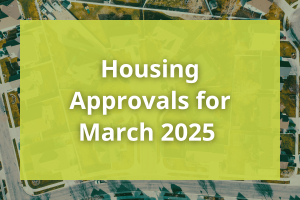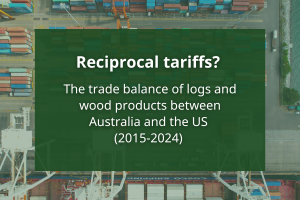Australia’s imports of plywood continue to grow, lifting to a total 552,321 m3 year-ended June 2021, a total rise of just over 24% on the prior year. More refined assessments that pull out volumes that industry considers likely to be flooring and unrelated products yields an almost 26% year-on-year rise in imports, closing in on 300,000 m3 for the full year.
The first chart shows Australia’s total plywood imports by country. It is difficult not to be consumed by the volume of imports from China. Its imports to Australia lifted 24.2% to 264,812 m3 or 48% of the total.

Source: ABS, derived and IndustryEdge
|
2019-20 |
2020-21 |
% Change |
2020-21 Share |
|
|
Chile |
38,181 |
40,552 |
6.2% |
7% |
|
China (Mainland) |
213,198 |
264,812 |
24.2% |
48% |
|
Indonesia |
42,813 |
53,080 |
24.0% |
10% |
|
Malaysia |
36,188 |
40,632 |
12.3% |
7% |
|
New Zealand |
20,802 |
16,804 |
-19.2% |
3% |
|
Poland |
14,258 |
18,211 |
27.7% |
3% |
|
Russian Federation |
8,182 |
14,335 |
75.2% |
3% |
|
United States of America |
16,157 |
22,871 |
41.6% |
4% |
|
Other |
55,203 |
81,045 |
46.8% |
15% |
|
Total |
444,982 |
552,340 |
24.1% |
100% |
When the products that industry considers are not strictly plywood – mainly flooring products and engineered wood products like LVL and CLT– are removed, the analysis shows specific plywood imports by grade.

Source: ABS, derived and IndustryEdge
|
2019-20 |
2020-21 |
% Change |
|
|
Overlaid <7mm |
22,594.5 |
17,078.3 |
-24.4% |
|
Overlaid >7mm |
95,444.3 |
131,158.8 |
37.4% |
|
Structural <7mm |
7,386.7 |
7,360.1 |
-0.4% |
|
Structural >7mm |
1,207.7 |
1,309.2 |
8.4% |
|
Interior |
25,538.7 |
35,141.7 |
37.6% |
|
Exterior |
85,546.3 |
106,221.4 |
24.2% |
|
Total |
237,718.2 |
298,269.5 |
25.5% |
Leaving this industry-supported breakdown aside, it is very important to examine the total import lines, to understand the recent trade, which like other wood products, is booming right now.
First, examining hardwood overlaid flooring (>7mm), we can see in the chart that the supply is all about China, and no one else. This is one of the grades making up the Overlaid >7mm product set out above and is often considered to include some flooring material.

Source: ABS, derived and IndustryEdge
|
2019-20 |
2020-21 |
% Change |
|
|
China (Mainland) |
61,254.3 |
80,417.2 |
31.3% |
|
Malaysia |
809.5 |
789.2 |
-2.5% |
|
Russian Federation |
146.1 |
879.7 |
502.1% |
|
Vietnam |
894.2 |
3,362.5 |
276.0% |
|
Other |
1,398.2 |
949.7 |
-32.1% |
|
Total |
64,502.3 |
86,398.3 |
33.9% |
Of similar but different interest, the coniferous exterior plywood product (again, included in the ‘exterior’ analysis above) has seen both recent increases in imports and an uplift in the supplies coming from unfamiliar countries, not least being those with no softwood resource of their own.
Could it be that increased softwood log exports to Indonesia and Malaysia have seen them lift their share of the supply of finished product back into Australia? We are not sure, but its food for thought, if nothing else.

Source: ABS, derived and IndustryEdge
|
2019-20 |
2020-21 |
% Change |
|
|
Brazil |
12,066.0 |
18,649.0 |
54.6% |
|
Chile |
22,729.1 |
25,229.5 |
11.0% |
|
China (Mainland) |
10,953.7 |
10,163.0 |
-7.2% |
|
Indonesia |
195.2 |
9,213.7 |
4,620.1% |
|
Malaysia |
3,760.9 |
7,272.7 |
93.4% |
|
Other |
1,073.8 |
1,498.4 |
39.5% |
|
Total |
50,778.7 |
72,026.3 |
41.8% |
Australia’s plywood imports – however you cut them up – are growing very strongly right now. When and how they fall back is, at the moment unclear, particularly with new market participants growing their share of the market reasonably strongly.
What of the grades that include LVL and CLT and similar engineered wood products? For time and space reasons, we will address them in the next issue of Statistics Count.



